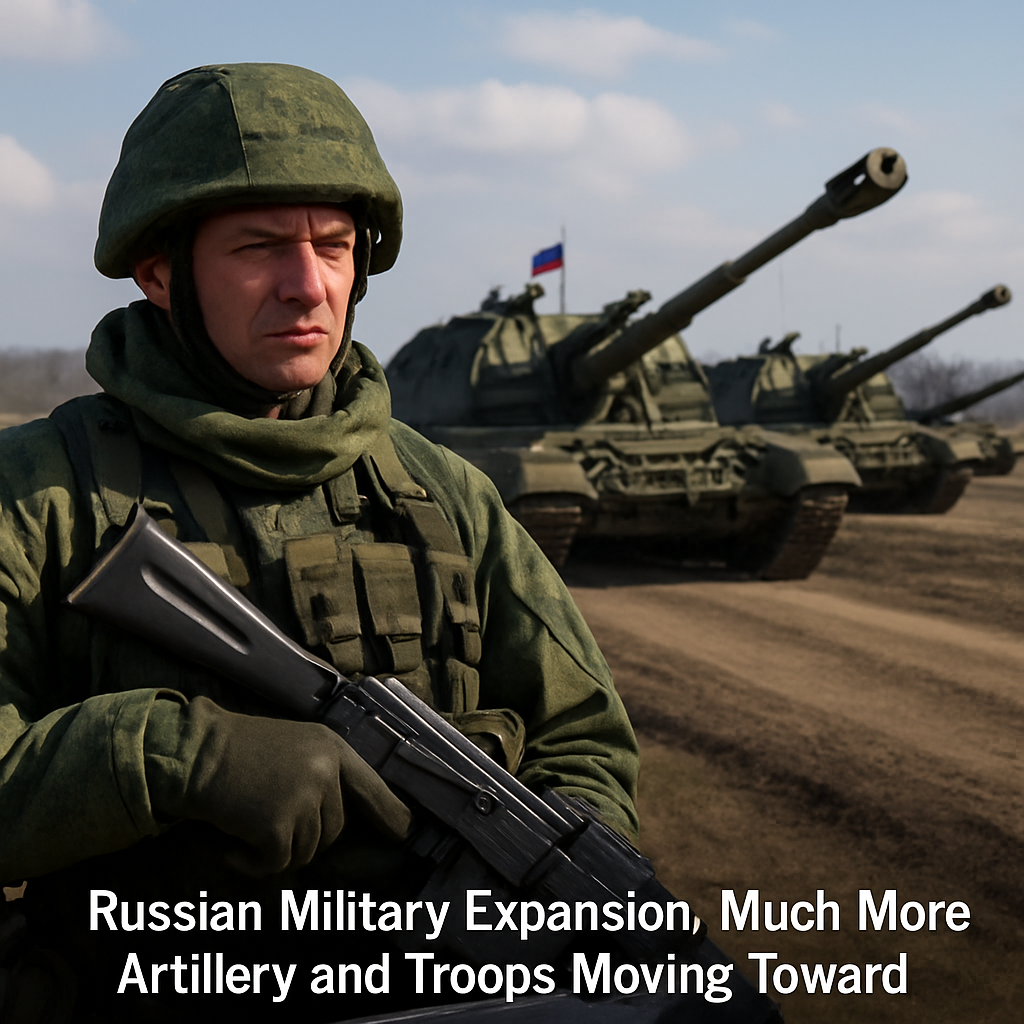Increased Military Production
Russia’s military production has been growing rapidly over the past few years, according to a report from Dutch military intelligence. The country has been producing much more artillery than it currently needs for its war in Ukraine. While it may seem that Russia’s focus is on the immediate conflict with Ukraine, the vast amount of artillery being produced suggests that Russia may be preparing for something much bigger in the long term. This increase in military production is not just for the current needs of the war but could be a sign of Russia’s broader strategic goals.
The Dutch military intelligence report highlights that Russia has been manufacturing a large number of weapons, especially artillery pieces. These are crucial for large-scale military operations, and the sheer quantity being produced raises concerns about Russia’s future intentions. The production of such large amounts of weaponry could be an indication that Russia is preparing for conflicts beyond Ukraine. By producing more than it needs for immediate battlefield use, Russia may be setting itself up for extended military campaigns, possibly in other areas, or as part of its long-term military strategy.
This strategy is also supported by the fact that Russia is receiving help from other countries in its arms production. These countries may be allies or partners, offering Russia resources or expertise to expand its military capabilities. This international collaboration could further enhance Russia’s ability to maintain a long-term military presence and challenge its adversaries.
Troops Moving Toward NATO Borders
Another major concern raised in the report is the movement of Russian troops and artillery towards the borders of NATO. This is particularly troubling for countries in Europe, as NATO (North Atlantic Treaty Organization) is a defense alliance that includes many European countries. NATO’s purpose is to ensure the security of its members, and any movement of Russian military forces, including artillery, towards NATO borders is seen as a potential threat.
The report suggests that Russia has been actively shifting its military forces, including new units and artillery, closer to these borders. This military buildup near NATO’s perimeter, especially with the inclusion of artillery, could be a signal of Russia’s increasing focus on the alliance. For NATO members, especially those located in Eastern Europe, this movement of troops and artillery is concerning. The presence of Russian military forces, along with heavy artillery, in close proximity to NATO countries could lead to tensions or even conflict, further escalating the already fragile security situation in Europe.
This troop movement and artillery deployment is part of a broader trend in which Russia is enhancing its military posture near the NATO alliance. The buildup of forces and artillery near these borders makes it clear that Russia is not only focused on the ongoing war in Ukraine but is also preparing for potential military challenges in the future.
Hybrid Warfare and Cyber Threats
The threats from Russia are not just confined to traditional military activities. The report also emphasizes the growing threat of hybrid warfare, which combines conventional military tactics with cyber attacks, disinformation, and other forms of unconventional tactics. Russia has increasingly used these tactics, not only in Ukraine but also against other countries, including those in Europe.
In particular, Russian hackers have been targeting critical infrastructure in several countries, including the Netherlands. These attacks have included attempts to disrupt transportation networks, political party websites, and public institutions. These cyberattacks are part of a broader effort by Russia to influence elections and public opinion in Europe, particularly targeting nations that have historical ties to Russia.
The interference does not just come in the form of cyberattacks but also through the spread of disinformation. Russian disinformation campaigns have been aimed at sowing division among European countries and influencing public opinion. These efforts are part of a larger strategy to destabilize countries and weaken the unity of the European Union and NATO.
The report also highlights concerns about the politicization of intelligence agencies, particularly in the United States. When intelligence agencies are influenced by politics, it can harm the cooperation needed for effective international security efforts. This issue adds another layer of complexity to the security challenges faced by NATO members and their allies in Europe.
The situation described in the Dutch military intelligence report reveals a complex and growing set of challenges. Russia’s increased production of artillery, troop movements towards NATO borders, and cyberattacks are all signs of a broader strategy aimed at enhancing Russia’s military capabilities and challenging NATO and European security. These threats are compounded by the use of hybrid warfare tactics, such as disinformation and cyberattacks, which further complicate the situation. As Europe faces these rising threats, there is a clear need for strengthened defense and security measures to address the growing risks posed by Russia’s actions.

